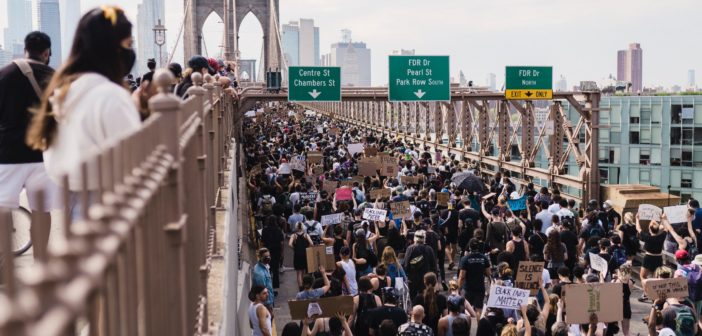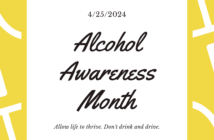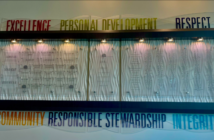By: Emily Miller, Senior Copy Editor
The murders of George Floyd, Breonna Taylor, along with countless other Black people at the hands of U.S. police officers followed by the subsequent rise of the Black Lives Matter movement is evidence that the fight against systemic racism is far from over.
I cannot speak for the everyday life of African Americans, of Black people in the U.S., but I can learn about racism and the history it represents: listening to and reading the accounts of those who wish to educate the public on racism is necessary to understanding why this issue still needs to be addressed.
“The Civil Rights movement, as we know it, really grew out of a long history of social protests. It was a number of social inequities that were happening, not just in the South,” said Dr. Ebony N. Perez, the Department Chair of Undergraduate Social Work at Saint Leo University.
Perez earned her doctorate in Curriculum and Instruction at the University of South Florida. She primarily conducts research on curriculum development, social justice, and anti-racist pedagogy in undergraduate social work.
Historical education often only focuses on racism and the Civil Rights movement in the South, painting the North as more progressive. Perez explained that, although segregation and racism as a whole, was different in the North, it still very much existed. Racism and protesting didn’t disappear after the end of the Civil Rights movement, either. The major events associated with the movement and protesting are no doubt monumental, but racism and protesting still exists within the cracks of our historical knowledge.
“The Civil Rights movement, as we think about it, was not just Dr. King going into Washington and giving his ‘I Have A Dream’ speech,” said Perez. “Often times in schools, and probably a lot of what you heard starts and ends with Rosa Parks and ‘I Have A Dream.’”
She emphasized that much of our historical knowledge, between slavery and Rosa Parks, is absent. Perez listed slave codes, slave patrols, and how they evolved over time. The slave patrols’ function was to police enslaved persons who escaped.
“The people in slave patrols became soldiers, those soldiers then became members of, what we now would call, white supremacist groups such as the KKK,” said Perez.
Those organizations became those keeping order, according to Perez. An NPR interview, “The History of Police in Creating Social Order in the U.S.,” expands on this. Chenjerai Kumanyika, an associate professor of Journalism and Media at Rutgers University, explained that the police force evolved from labor control in both the North and South.
He stated, “in the South, that was controlling slaves. But in the North, that actually had to do with controlling any inconvenient population, especially labor. And so the institution of policing is very much connected to the enactment of violence against strikers and union-breaking.”
Dr. Victor E. Kappeler of Eastern Kentucky University in “A Brief History of Slavery and the Origins of Modern Policing,” exemplified these connections. The colonies enacted laws which criminalized and controlled enslaved people; Congress passed the Fugitive Slave Act of 1850, which allowed the detention and return of escaped enslaved people.
“So often, Black and brown people have been saying ‘cops have been stopping and frisking us for no reason’ or ‘we’ve been subjected to over-policing and police brutality in our neighborhoods,’” said Perez.
It isn’t solely white supremacist groups and the police inciting racism, either.
“As a social worker and a person who has a healthy respect of history, we can see how racism has been baked into our country through the laws that we’ve produced and enforced, through the systems that we have set up: the way we structure our neighborhoods, the way we structure our schools,” said Perez.
Redlining is a major part of this structure. Redlining is the refusal of a loan or insurance to someone who lives in an area deemed to be a poor financial risk which typically targets people of color. According to New York Times article, “How Decades of Racist Housing Policy Left Neighborhoods Sweltering,” “Redlined neighborhoods, which remain lower-income and more likely to have Black or Hispanic residents, consistently have far fewer trees and parks that help cool the air.” In other words, those people suffer both financially and from hotter temperatures.
The U.S. does have laws aimed to fight against white supremacy and racism and has had themfor many years. But, as Perez explained, this doesn’t fix everything.
“The laws, unfortunately, don’t necessarily change behavior. And laws definitely don’t change culture. People change culture,” said Perez.
Thus, education and protesting come into play. Several times, Perez noted that social protests did not begin overnight, but were a result of long-term injustices and thus happened alongside these injustices. Perez noted that white people joined Black people in protesting, too.
“We don’t talk as much about Black and white people joining together during the Freedom Rides and the Civil Rights movement,” said Perez.
During the Freedom Rides in Birmingham, Alabama, a bus was stopped by eight white men who then boarded the bus.
“They savagely beat, with chains and sticks, the Freedom Riders who were there, non-violently; they were on the bus. They weren’t out there with guns,” Perez said.
The protests of the Civil Rights movement and protests today share similarities—with regard to both who was protesting, and who was against those protests.
Many young people were involved in Civil Rights protests; unfortunately, some white parents disowned their children because they attended protests, according to Perez. While it is possible that some white parents today did the same , it’s less likely to happen now. The Civil Rights counter-movements of the ‘50s and ‘60s included white supremacist groups, the KKK, and various neo-Nazi groups.
“Those were the people attempting to stop progress,” said Perez. “I don’t think that’s really changed […] It may look different, because we have different technology.”
She addressed the discomfort some may have surrounding the Black Lives Matter movement as well, noting the All Lives Matter and Blue Lives Matter counter-movements.
“A Black child’s life is just as important as a white child’s life, as a Latino child’s life; we are all equal,” said Perez. “The discomfort with the phrase ‘Black Lives Matter’ is a temperature check and a reflection of the work we still have to do.”
Perez is cautiously optimistic.
“I hope one of the differences between the two movements is that, as the Civil Rights movement marched on and then after the assassination of Dr. King, we did not keep progressing,” said Perez. “My hope and my prayer is that with these Black Lives Matter protests, that there will be more people who will stay in the fight for the long haul. We didn’t get in this mess overnight. If we get weary in doing well, we’re never going to get to the mountaintop.”
Toni Morrison’s “The Black Experience; A Slow Walk of Trees (as Grandmother Would Say) Hopeless (as Grandfather Would Say)” concludes that, “there is repetition of the grotesque in our history. And there is the miraculous walk of trees. The question is whether our walk is progress or merely movement.” This reflects, in some ways Perez’s sentiment; and mine as well.
We can reach “liberty and justice for all” but not without listening, understanding, and believing those oppressed and those who do not truly receive liberty and justice now.





